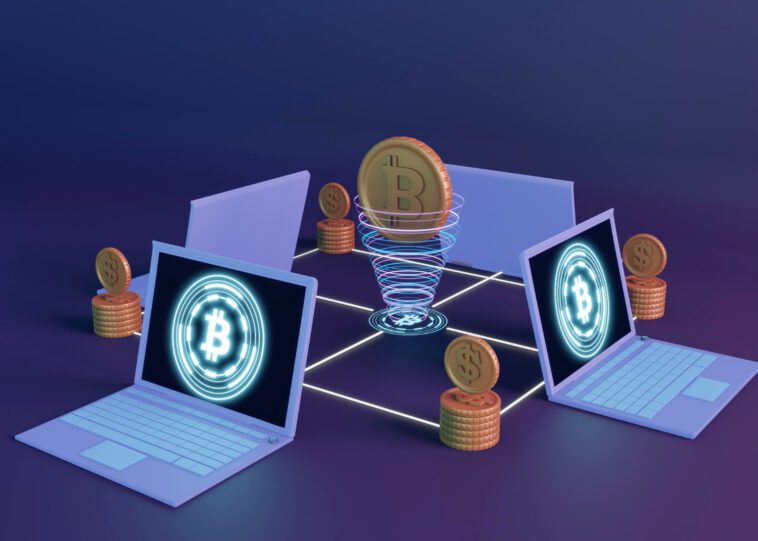Crypto mining is the process of creating digital tokens. It utilizes electricity to verify and add a block of transactions to a cryptocurrency’s blockchain.
Mining cryptocurrency requires special computers designed to solve complex mathematical equations. The first miner who produces an accurate answer wins the right to confirm a block of transactions related to that cryptocurrency.
Cryptocurrency Transactions
Cryptocurrency transactions take place on a public ledger, known as a blockchain. This public record of all transaction history for the cryptocurrency network makes it impossible to copy or duplicate transactions and also removes the need for centralized intermediaries like banks or internet marketplaces that charge fees when processing cryptocurrency trades.
When a user wants to send a transaction, they broadcast it onto the network and wait for a miner to pick it up. Miners use computers to verify and validate each block of data before adding it onto the end of the blockchain.
Miners compete to solve complex puzzles, which involve creating a hash value with a specific number of leading zeros and adding it to the blockchain. The process is energy-consuming, but those who succeed receive newly generated cryptocurrency tokens as compensation.
Crypto mining is also a way to ensure the accuracy of the blockchain’s historical record, which is essential for keeping the network secure and functioning optimally. This method has numerous advantages such as avoiding double-spending risks and providing an immutable and publicly accessible record of every transaction on the network.
Depending on the coin, mining processes may differ, but the fundamental concept remains constant: crypto miners spend their energy trying to create the highest hash value and add it to the blockchain. This requires a considerable amount of computing power so if you’re interested in joining this game, it’s essential to comprehend how it works and which coins are ideal for mining.
Once the mining process is complete, the miner’s reward is added to a new block on the blockchain. This block includes both an old hash of the previous block as well as its current hash and header data for each transaction included within.
The speed at which a transaction can be processed depends on several factors, including network load, complexity of the transaction and how frequently blocks are mined. Generally speaking, the more intricate a transaction is and higher the network load is, the longer it will take for processing.
Blockchain Technology
Blockchain technology is a decentralized form of record-keeping that has the potential to revolutionize how businesses operate. This system provides secure, dependable, and transparent records of transactions while creating an indelible audit trail which companies can use to protect their customers’ data and prevent fraudulence.
The technology works by creating a decentralized, distributed database that can be accessed and verified by anyone, anywhere. Each participant in the network has their own copy of the blockchain, and they are able to verify each other’s transactions through consensus.
Making a transaction requires adding a new block of data to the blockchain network. After that, majority of participants must agree on its validity through permissions or economic incentives.
A network of nodes then uses their computing power to verify the new block and update the chain. This requires solving complex cryptographic puzzles that require a high amount of processing power and sophisticated equipment.
Crypto mining is the process of adding new blocks to a blockchain. Miners are rewarded with cryptocurrency (Bitcoin) for their work.
Contrary to traditional financial institutions, where deposits and withdrawals can take days to process, transactions on the blockchain are instantaneous. This presents a major advantage as it allows companies to operate continuously without worrying about payment settlement delays.
Another advantage is the reduction of fees and elimination of errors due to its decentralized nature. Blockchain also boasts high security levels that cannot be altered or hacked, eliminating any single point of failure in the system.
Furthermore, smart contracts can be utilized to automatically send payments when certain conditions are fulfilled. These types of smart contracts are becoming increasingly popular and could revolutionize the financial industry.
Though blockchain technology is straightforward to use, it requires extensive technical know-how. Banks and other financial services firms should research this area thoroughly and test out single-use applications while they develop the required skillset. By doing so, organizations will gain a better insight into how to utilize this emerging technology more sophisticatedly.
Proof-of-Work
Proof of work (PoW) is the consensus mechanism utilized to verify and mint new coins in cryptocurrencies like Bitcoin. It relies on mathematical puzzles being solved by computer programs called miners, who compete to be the first person who solves these problems and earn a reward in cryptocurrency.
Crypto mining involves computer hardware guessing an encrypted hexadecimal number called a hash, which is highly resistant to cracking. Once they do, miners broadcast their solution to other network members who can verify it and add the result onto the blockchain.
Therefore, mining is a highly competitive process that requires immense processing power – which increases with the number of miners joining the network. When miners successfully solve proof-of-work puzzles and are selected by the network to mine blocks, they are rewarded with new cryptocurrency.
Miners are responsible for safeguarding the network by validating transactions and adding them to the blockchain, a decentralized ledger that cannot be altered without altering all subsequent blocks. This prevents double-spending of digital currencies on the network and guarantees accurate recording of all transactions.
When a block of transactions is added to the blockchain, it also contains its hash of all previous blocks. This serves as an extra layer of protection against any attempts at hacking or fraudulence; all subsequent blocks must follow this hash signature in order to maintain chain security.
This hash signature is generated by passing data in a block through a hash function, which generates an hexadecimal code that can only be cracked with the correct combination of numbers. Generating such a hash requires considerable computing power and it may take even longer to guess it correctly.
Due to its complex hash algorithm, networks have an incentive to verify all transactions accurately and thwart malicious actors that might try to disrupt it. This has allowed cryptocurrencies like Bitcoin to secure trillions of dollars worth of transactions – proof that decentralized networks can be just as secure as centralized ones.
Security Measures
Cryptocurrency mining is an energy-intensive process that consumes a considerable amount of electricity and CPU power. It also reduces hardware scalability, taking up vast amounts of storage space. Furthermore, cryptocurrency mining may negatively impact network traffic patterns as well as raise the cost of IT infrastructure for businesses.
Organizations who wish to prevent unauthorized crypto mining must ensure their security practices adhere to industry standards. They should create business continuity and disaster recovery plans, create an incident response playbook, and conduct tabletop exercises as a part of these exercises.
IT teams must educate their employees about cyber security and equip them with the ability to detect early indications of cryptojacking and take immediate action. Furthermore, application whitelisting and other security measures should be put in place to prevent malicious software from running or installing.
Cryptojackers create scripts that infect websites or devices in order to utilize its computing resources for mining cryptocurrencies. This can be accomplished either through embedding the software onto a website, or deploying it directly onto a victim’s device through a host-based attack.
Once a victim’s device is infected, cybercriminals have the power to direct how much energy is directed toward illicit mining operations. This can be accomplished through various methods such as hacking public Wi-Fi networks, sending phishing emails inflicting infections onto devices, or altering hardware to slow down CPU function and consume more electricity.
One of the most reliable methods to detect cryptojacking is by monitoring CPU usage on servers and endpoints throughout an organization. A sustained increase in CPU consumption that does not match with normal activity could indicate mining malware.
Another approach is to utilize continuous integration and continuous delivery (CI/CD) to examine code for cryptocurrency mining threats before it goes live in production. CI/CD offers a faster development cycle and allows you to update software continuously, so ensuring security in the pipeline is essential.
In addition to the above security measures, there are additional best practices you can implement to safeguard your Google Cloud environment from cryptocurrency mining attacks. These include recognizing and eliminating likely threat vectors, safeguarding Google Cloud environments against attack, and being able to respond effectively if an attack does occur.



